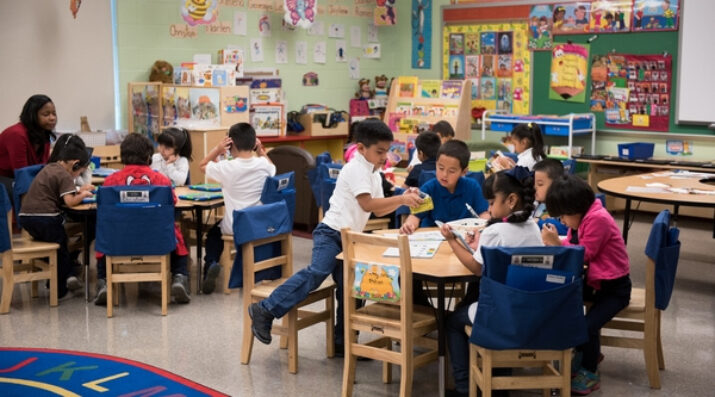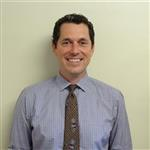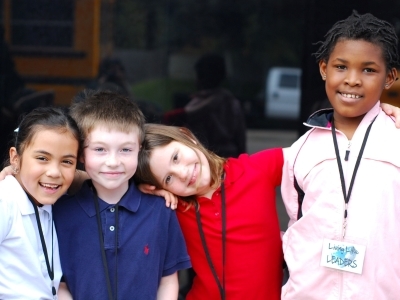In a Tough School Year, Keeping Eyes on the Classroom Will Be Key to Improving Equitable Outcomes for All
Topics

When educators design and create new schools, and live next gen learning themselves, they take the lead in growing next gen learning across the nation. Other educators don’t simply follow and adopt; next gen learning depends on personal and community agency—the will to own the change, fueled by the desire to learn from and with others. Networks and policy play important roles in enabling grassroots approaches to change.
Improving what happens in the classroom is key to any long-term change in schools. Observing classrooms must become more about continuous learning and improving than about evaluation.
As we open school this year and double down on our commitment to equitable outcomes for all students, we must remember the key to any long-term change is what happens in the classroom. While this may seem obvious, every year we struggle in our profession to consistently observe and reflect on the teaching and learning that happens inside our classrooms.
This year will be equally challenging. Two important factors are at play. The first pressing priority is that all eyes will be on student and staff safety as the new delta variant becomes more present. The second pressing priority is the increasing need to talk with one another within our schools and districts about educational equity. Both of these topics will undoubtedly be part of the educational landscape this year. However, our school staff, district leaders, and elected school board officials must understand that watching the interaction between teachers, students, and the subject matter is the ultimate lever in attaining stronger educational outcomes for all students. And, furthermore, when we build and support processes to network our observations and reflections together across a school and a district, we begin to build powerful cultures of learning that will accelerate the growth of educators and students.
Just as all great athletes, artists, doctors, and other professionals constantly analyze their performance, observe their technique, and examine the results of their efforts, so must educators. Not only is each individual looking at their own work but these professions as whole have created a culture of performance observation and public learning for the benefit of their continued improvement. As a profession, the education field has had many fits and starts in creating an educational culture that allows for constant observation of our work. Everyday a teacher delivers a lesson to about 30 students. A high school teacher might be working with up to 180 students everyday. This is where the learning happens and where our focus must remain.
While professional development in a meeting room will be helpful, nothing will substitute for a meaningful observation of those 180 students.
How did the students react to the lesson? Who showed understanding? Who did not? Are there certain groups of students really tuned in, tuned out? Do the students like the teacher? Is there a student constantly off task or interrupting the teacher? Who is participating? Are the students talking? Do we hear them reason or problem solve? Are they working successfully in teams? Can they read complex text? Handle a project? Are patterns of inequity being reproduced here?
If we only look at summative assessments and if we only look at written statistical data, we miss the opportunity to understand how to authentically improve our teaching. A sprinter could simply look at her time and decide she needs to run faster, but that is just the beginning. The real work is examining her form and her technique from the starting block through the run to the finish.
If we are open to watching ourselves and letting others watch us in order to help, we can grow exponentially.
Why Observing What Happens in Classrooms Is So Important
Just the word “observation” makes many teachers cringe because of their terrible experiences with being “observed” one time per year for only evaluative purposes. This is understandable. Yet, if the teaching profession is to become truly professionalized, we must become a culture where we are continuous learners. We must be curious, inquisitive, and thoughtful about our performance. Everyday the adults attempt to create a learning experience for the students. This learning experience must be observed carefully. Arriving at a more equitable school system will require doing more for those furthest away from opportunity and it will also require profound learning and growth in our everyday practice.
We have strong examples of the importance of watching our work in education. Japanese lesson study provides a powerful example in which educators observe lessons together to see how students are reacting and responding to the instruction. Educators can discuss the interplay between teacher, content, and student. This process of lesson study and classroom analysis is invigorating. It is intellectual. It is academic. It is authentic problem solving and it is what makes the education field so special as we try to unlock the doors to help each and every student grow. Plenty of strong educational systems around the world give their teachers the time and space to not just plan and prepare but to observe and collaborate about the lesson at hand.
A famous systemic example of this work is the well documented “educational rounds” processes in New York City's District 2 in the 1990s. During this time observation was the key theory of action for educational improvement. Educational rounds were implemented (similar to the medical profession) where multiple people watched a lesson and gave feedback about that lesson. Harvard University professor Richard Elmore thoroughly documented this process showing the benefits of a deep focus on watching what happens in the classroom.
If we are to truly transform educational outcomes for students, we must do it through improvements in the classroom. Observation of teaching leads to important insights about our curriculum, about our assessments, and about our instructional strategies. It allows us a window into patterns of student participation and bias. I still remember early videos of my teaching where I suddenly saw that I always walked a certain way in the classroom and blocked out a few students behind me. I remember asking Nadine, a student, if I always had my back to her and she said, “Uh, yeah and you never call on me because you never see my hand.” If we are open to watching ourselves and letting others watch us in order to help, we can grow exponentially.
As a former principal and superintendent and someone who just enjoys kids digging into student learning, there is nothing more refreshing than walking through a school with open doors where classroom visits are a welcome part of a continued effort to grow and learn.
Why Shifting from a Culture of Classroom Isolation to a Culture of Open Doors Is So Hard
Sadly, the reality in schools is that over the years observation and the idea of observation has become synonymous with evaluation and punitive action. The potential to create cultures of continuous improvement through observation has stagnated as teachers have felt observations were only for punitive or evaluative reasons. With the concept of the observation stigmatized, other creative ways of observing lessons such as peer observations (by teachers and for teachers) have been limited.
As a former principal and superintendent and someone who just enjoys kids digging into student learning, there is nothing more refreshing than walking through a school with open doors where classroom visits are a welcome part of a continued effort to grow and learn. Yet, this is actually very rare. Schools under high stress and in tight budget situations have all available personnel putting out fires, handling emergencies, prioritizing safety, and running the logistics of the school. Many schools (more often in poor communities than rich) fit this description across the country. This leaves little time for authentic observation and discussion of instruction.
While this dynamic must change, it is easier said than done. Personnel are busy dealing with the many complexities and urgencies and stresses that take place every day. The majority of public schools in the U.S. operate at razor-thin margins of scarcity and have little ability (or have created a culture of limited ability) to do anything other than get through the day. As a result, a great many teachers have had no visitors to their classroom throughout the school year. Doors are closed and there is little discussion or self-reflection around the teaching and learning.
The culture of classroom isolation continues to grow. Even worse, after many years of few visitors and observers, a self-fulfilling prophecy has emerged in many schools, allowing us to believe that the closed-door private culture of classrooms is not just normal but essential. A teacher who teaches five classes per day for 180 days therefore teaches 900 times during the year. Would an athlete, musician, or surgeon only examine 1/900 of their performances?
If the only time a teacher receives an observer to her classroom is for evaluative purposes, it's no wonder that a culture of defensiveness, protection, and privacy exists. Having had nobody talk with her about her lesson for many months (maybe years) on end, it then becomes a high-stakes moment when somebody does observe. That single moment might determine her performance rating for the school year. It is not the single teacher observation that builds cultures of learning but constant shared public learning—where teachers participate in both giving and getting feedback—transforming the whole school’s culture into one where excitement is brewing to get better through watching and sharing.
And if the conversation we want to have is about equitable outcomes, then one or two scarce visits will not create the space of trust and learning for educators to grow their practice for the benefit of those most left behind.
Creating an organizational culture of learning predicated on trust and safety is foremost for the development of our educators. Our teacher shortage continues to explode and we have no alternative but to deeply invest in our teachers' development. I believe we can create a culture of observation for learning where teachers themselves take the lead about what they are seeing so they can learn. When I was a principal, some of the most powerful growth opportunities I experienced for teachers, in service of their students, came from their own observations of each other without needing an administrator present. This exercise began to build our culture of collective learning making our work more public to each other than ever before. Getting students involved in these learning walks and hearing their perspective on what they see makes the activity even richer. As a superintendent, I partnered with organizations like Lead by Learning who helped us continue to build our culture of shared learning through observation and public sharing.
Why Creating Space for Classroom Observation Needs to Be at the Top of Our Priority Lists
As a former superintendent I understand firsthand about the pressures we face to constantly implement new and more powerful initiatives and strategies in the name of educational equity. Focusing on social-emotional learning is important. Ensuring access to the arts is important. Making time for discussions about race and equity is important. Building Community Schools and ensuring student mental health is important. Delivering healthy and nutritious meals is important. Ensuring access to technology and the internet is important. Aligning our high school career pathways to growing industries is important. Lowering class size is important. I personally have felt the pressure to create initiatives and to make growth in all of these areas. They are all important, but at the end of the day it still comes down to what happens in the classroom. It still comes down to the relationship between the teacher, the student, and the material. The mission of our work as educators takes place inside the classroom in the mutual act of teaching and the process of learning. It is that dynamic between teaching and learning surrounded by a positive adult-student relationship that must be excitedly watched and discussed as much as possible.
So this prompts some key questions for the coming school year:
Who will be protected to do this work? How can schools and central offices rethink their limited resources to focus on watching what happens in the classroom? How can districts and states take away some other requirements so we can carefully focus on what happens inside the classroom? How can we work with our teacher’s unions and teacher leaders to create a culture where observation is seen as a tool for growth and learning not punishment and evaluation? How can we center the work of observation as the key equity strategy in our systems?
When educators put their heads together around these questions, they will find the answers. Whether it be new systems of peer observation, more protected observation time for school leaders, new and different types of help from the central office, or a process for self-video, answers to how we spend more time helping teachers see themselves teach will emerge.
Many schools and districts will kick off the year with powerful and inspiring speakers, discussions, and strategies that aim to create positive and inspiring outcomes for all of our students. Let’s put this inspiration to work and use the work of classroom observation to build trust, to unpack patterns of bias, to learn to talk to one another productively, and to get back to the core of what we do: facilitating powerful learning experiences for our students. It is now more crucial than ever that our profession becomes consistent about looking at our teaching and consistent about the processes that allow us to talk to one another about it. Let’s turn the concept of “observation” as infrequent and punitive on its head. With the new school year just underway, I hope we do everything we can to create powerful cultures of observation and learning in our schools in service of equitable outcomes for all.
Photo at top courtesy of NGLC.




